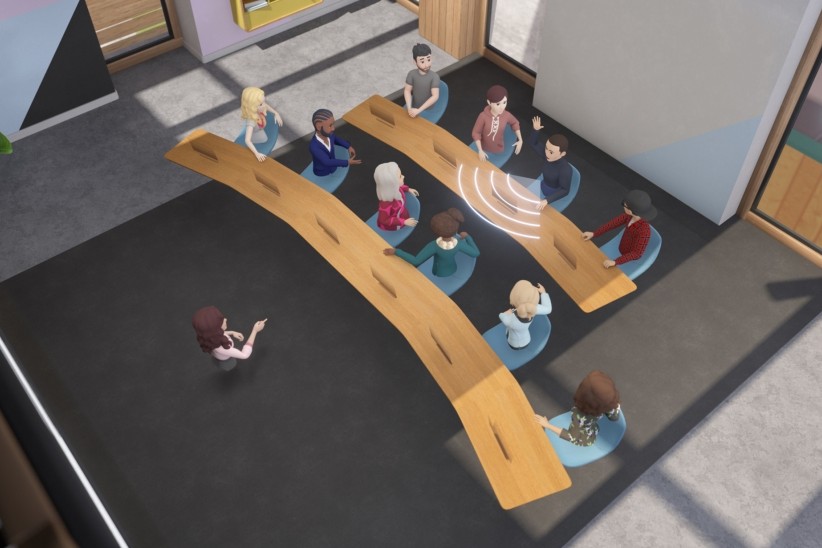The portmanteau “bleisure” – which combines the words leisure and business - has taken the business and travel world by storm as a growing number of workers return to business trips.
September 16, 2022
Wellbeing
Sustainability
Trending
Back in the day, business travel meant two- or three-day corporate getaways and conferences. Historically, business travel didn’t lend itself to leisure of any kind. But a new trend that blends together business and leisure travel is changing the way people travel post-pandemic – for better or worse.
The portmanteau “bleisure” – which combines the words leisure and business - has taken the business and travel world by storm as a growing number of workers return to business trips. From freelance writers to corporate executives, more and more workers are looking to blend their business trip with family time, solo travel, or just an extended vacation. It’s a trend that’s having interesting implications for travelers, businesses, and the travel industry as a whole. Let’s break down what “bleisure” is and how it’s changing the world of work.
"Bleisure" travel is a new trend where workers combine their business trips with leisure travel. It’s a trend that is taking the travel industry (and workforce) by storm, and ultimately, it is changing the future of work. It offers workers a chance to add on a weekend, a week, or more, to the front or back of a business trip.
Why would workers want to blend their corporate conferences with some down time? Well, for one, it allows them to spend some time in new places and explore the area. Combining a business trip with a vacation can be a great opportunity to get to know the destination beyond corporate events. Corporate events often means workers only see the inside of a hotel conference room, job sites…and not much more.
The pandemic has pushed more people to work from home. But depending on their role and the company, workers may have flexibility to work from different locations, similar to digital nomads.
However, unlike digital nomads who might spend time in one destination of their choosing before moving to another, “bleisure” travelers are motivated by the primary purpose of their trip: business. Yet, despite the purpose of the trip, workers still have reason to extend their trips, whether that be self-care, environmental impact, or simply the desire to see a new place.
Whether due to a concept known as “revenge travel” or a simple change to flexible work styles, Travel Edge Network has seen an increase in interest for bleisure—also referred to as “workcations”—by over 25% compared to recent years.
So, for those taking advantage of bleisure, where are they going and how long are they staying?
The same study by Travel Edge Network reported that “Travel Edge professionals [the advisors who collected the data] are witnessing longer stays in urban hubs, including long-haul trips to Europe and South America. The duration of these trips has tripled within the last three years as the majority of long-haul travelers now last for ten or more days.
Depending on where the worker is traveling from, they may have previously spent more time in the air than at the destination. A bleisure tourist from Australia going to Europe, for example, will have more incentive to increase their vacation simply because of the travel time. That’s one of the motivating factors behind bleisure trips: actually having time to get over the jetlag and enjoy the place before having to board their flight back home.
So, what does a bleisure trip actually look like?
Prior to COVID-19, Expedia Group reported that 60% of business travelers are extended for “leisure purposes.” This included entertainment and/or activities available and how easy they’d be able to get around. Bleisure travelers are willing to travel up to two hours by car or plane to reach a destination for the leisure portion of this trip, both in international and domestic locations.
Additionally, 56% said they would be more likely to consider a bleisure trip if the destination had good food and restaurants, while 50% were motivated by beaches, weather, nature, and what there was available in terms of sightseeing, i.e historical monuments. The same study reported that the average bleisure traveler spends the same amount of money or more during the leisure part of the trip as the business part. And, if the destination was a bucket-list place, even better!
The portmanteau “bleisure” – which combines the words leisure and business - has taken the business and travel world by storm as a growing number of workers return to business trips. From freelance writers to corporate executives, more and more workers are looking to blend their business trip with family time, solo travel, or just an extended vacation. It’s a trend that’s having interesting implications for travelers, businesses, and the travel industry as a whole. Let’s break down what “bleisure” is and how it’s changing the world of work.
What is bleisure travel?
"Bleisure" travel is a new trend where workers combine their business trips with leisure travel. It’s a trend that is taking the travel industry (and workforce) by storm, and ultimately, it is changing the future of work. It offers workers a chance to add on a weekend, a week, or more, to the front or back of a business trip.
Why would workers want to blend their corporate conferences with some down time? Well, for one, it allows them to spend some time in new places and explore the area. Combining a business trip with a vacation can be a great opportunity to get to know the destination beyond corporate events. Corporate events often means workers only see the inside of a hotel conference room, job sites…and not much more.
What motivates bleisure travel?
The pandemic has pushed more people to work from home. But depending on their role and the company, workers may have flexibility to work from different locations, similar to digital nomads.
However, unlike digital nomads who might spend time in one destination of their choosing before moving to another, “bleisure” travelers are motivated by the primary purpose of their trip: business. Yet, despite the purpose of the trip, workers still have reason to extend their trips, whether that be self-care, environmental impact, or simply the desire to see a new place.
Whether due to a concept known as “revenge travel” or a simple change to flexible work styles, Travel Edge Network has seen an increase in interest for bleisure—also referred to as “workcations”—by over 25% compared to recent years.
How long is the average bleisure trip?
So, for those taking advantage of bleisure, where are they going and how long are they staying?
The same study by Travel Edge Network reported that “Travel Edge professionals [the advisors who collected the data] are witnessing longer stays in urban hubs, including long-haul trips to Europe and South America. The duration of these trips has tripled within the last three years as the majority of long-haul travelers now last for ten or more days.
Depending on where the worker is traveling from, they may have previously spent more time in the air than at the destination. A bleisure tourist from Australia going to Europe, for example, will have more incentive to increase their vacation simply because of the travel time. That’s one of the motivating factors behind bleisure trips: actually having time to get over the jetlag and enjoy the place before having to board their flight back home.
What do bleisure trips look like?
So, what does a bleisure trip actually look like?
Prior to COVID-19, Expedia Group reported that 60% of business travelers are extended for “leisure purposes.” This included entertainment and/or activities available and how easy they’d be able to get around. Bleisure travelers are willing to travel up to two hours by car or plane to reach a destination for the leisure portion of this trip, both in international and domestic locations.
Additionally, 56% said they would be more likely to consider a bleisure trip if the destination had good food and restaurants, while 50% were motivated by beaches, weather, nature, and what there was available in terms of sightseeing, i.e historical monuments. The same study reported that the average bleisure traveler spends the same amount of money or more during the leisure part of the trip as the business part. And, if the destination was a bucket-list place, even better!
Why is bleisure travel so popular?
It’s easy to see the lure of bleisure travel. Here are some of the main reasons it has become so popular:
- Travellers can visit a destination with a lower rate for a longer stay. If you’re going for a conference, for example, you will save money on airfare and accomodations. In short: your company is helping subsidise part of your holiday.
- Many travellers are bringing their friends and family on bleisure trips, so they can spend less time away from their loved ones and get to enjoy the trip together.
- Sometimes, people will revisit a location several times. This means getting to know a location and culture better.
- In 2021, the World Economic Forum cited that business travel had been one of the biggest contributors to carbon emissions. Though there’s still a long way to go to make business travel more sustainable in general, bleisure is an attractive option for those who value the impact this type of travel has on the environment.
Bleisure travel and burnout
Based on these benefits that are helping both travellers and the struggling travel industry as a whole, it’s no surprise that now that more than half of business trips are becoming bleisure trips instead.
However, the trend also has critics. Some argue that workers might not be able to truly disconnect when they blur the lines between work and vacation, which ends up leading to more burnout down the line.
And, workers are struggling with burnout more and more since the start of the pandemic. What’s worse is that their employers aren’t noticing. In fact, more than half of all managers find it hard to identify when staff may be struggling with mental health issues (53%) or overwork and burnout (51%).The study also dives into the importance of managers listening to their employees’ needs.
And, yet another study -- this time by Indeed -- cited, “Sixty-one percent of remote workers and 53% of on-site workers now find it more difficult to “unplug” from work during off-hours.”
All this considered, it’s easy to see why there are concerns that bleisure may do more harm than good. Are workers able to step away from work even when the business part of the business trip is over? Or, is it simply the combination of the pandemic and unaware employers who are to blame -- and, maybe bleisure trips are actually the solution employees need to recharge?
Key Takeaways for the Future of Work
Although we have a long way to go before we understand the full implications of bleisure, it’s clear that the future of work is changing. Bleisure offers an opportunity to continue hosting those important business trips, while eliminating some of the downsides that tend to accompany them. We don’t know yet if bleisure will increase employee morale or make workers more productive, but managers should consider implementing policies to promote bleisure to see if there is a positive impact.



